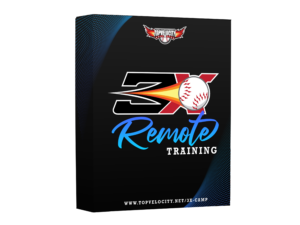The stratified pitch count is a key Pitching Rules Little League Baseball component that protects player safety and fair play. This system, which is inextricably linked to the amount of pitches delivered by a player throughout a game, acts as the guiding parameter in determining when a player can step up as the pitcher. It effectively serves as a precaution, keeping any pitcher from over-exerting himself and risking damage. As a result, it emphasizes the sport's dedication to creating a safe and balanced competition environment.
Using the pitch count to calculate the required rest days adds a tactical aspect to the game. Pitchers must be used strategically by team managers and coaches, taking into mind both the player's current pitch count and the potential need for rest days. This dynamic not only puts the players' resilience and skills to the test, but also the team leadership's strategic ability. In essence, the pitch count and following rest days represent baseball's vast complexity, combining the physical demands of the sport with off-field tactical decisions.
Pitching Rules Little League for Regular Season Baseball VI - PITCHERS
 (a) Any member of a regular season squad may pitch. (NOTE: There is no limit to the number of pitchers a team can use in a match.) EXCEPTION: Any player who has played catcher for four (4) or more innings in a game is not permitted to pitch on the same day.
(a) Any member of a regular season squad may pitch. (NOTE: There is no limit to the number of pitchers a team can use in a match.) EXCEPTION: Any player who has played catcher for four (4) or more innings in a game is not permitted to pitch on the same day.
(a) Once a pitcher is ejected from the mound, he or she is not permitted to return to the mound.
A player who has served as a catcher for three (3) innings or less, changes to the role of pitcher, and throws 21 or more pitches in the same day, is not permitted to return to the catcher position that day. EXCEPTION: If a pitcher reaches the 20-pitch mark while competing with a batter, they can continue pitching and retain their catcher return eligibility until one of the following events occurs: (1) the batter reaches base; (2) the batter is dismissed; or (3) the third out ends the half-inning or game.
(c) The manager is required to withdraw the pitcher when he or she reaches the age limit for his or her age category, as indicated below. However, the pitcher can play another position in the game:
Pitching Rules Little League by League Age
| AGE | PITCHES PER DAY |
|---|---|
| 6-8 | 50 Pitches |
| 9-10 | 75 Pitches |
| 11-12 | 85 Pitches |
| 13-16 | 95 Pitches |
![]() EXCEPTION: If a pitcher reaches the league age limit prescribed by Regulation VI (c) while engaging a batter, the pitcher may continue to pitch until any of the following events occurs: 1. The hitter advances to second base; 2. The batter is ejected; and 3. The third out ends the half-inning. NOTE: If a pitcher reaches 40 pitches while facing a batter, the pitcher may continue to pitch and retain their eligibility to serve as catcher until one of the following conditions occurs: (1) the batter reaches base; (2) the batter is retired; or (3) the third out ends the half-inning or game. The pitcher would be allowed to take up the catcher position as long as the pitcher is shifted, replaced, or the game is over before pitching to next batter. If a player throws 41 or more pitches and is not covered by the threshold exception, the player may not catch the rest of the game.
EXCEPTION: If a pitcher reaches the league age limit prescribed by Regulation VI (c) while engaging a batter, the pitcher may continue to pitch until any of the following events occurs: 1. The hitter advances to second base; 2. The batter is ejected; and 3. The third out ends the half-inning. NOTE: If a pitcher reaches 40 pitches while facing a batter, the pitcher may continue to pitch and retain their eligibility to serve as catcher until one of the following conditions occurs: (1) the batter reaches base; (2) the batter is retired; or (3) the third out ends the half-inning or game. The pitcher would be allowed to take up the catcher position as long as the pitcher is shifted, replaced, or the game is over before pitching to next batter. If a player throws 41 or more pitches and is not covered by the threshold exception, the player may not catch the rest of the game.
(d) Pitchers under the age of 12 must observe the rest guidelines outlined below:
Pitching Rules Little League by Days Rest Thresholds
| PITCHES | REST | AGE |
|---|---|---|
| 1-20 | 0 Days | 14 and Under |
| 21-35 | 1 Day | 14 and Under |
| 36-50 | 2 Days | 14 and Under |
| 51-65 | 3 Days | 14 and Under |
| 66+ | 4 Days | 14 and Under |
| 1-30 | 0 Day | 15 & 16 |
| 31-45 | 1 Day | 15 & 16 |
| 46-60 | 2 Days | 15 & 16 |
| 61-75 | 3 Days | 15 & 16 |
| 76+ | 4 Days | 15 & 16 |
 The manager or head coach is always in charge of determining when to change a pitcher.
The manager or head coach is always in charge of determining when to change a pitcher.
NOTES: If a pitcher reaches 30 pitches while facing a batter in the first game, the pitcher may continue to pitch and be eligible to pitch in the second game on that day unless any of the following circumstances is met: (1) that batter advances to second base; (2) that batter is retired; or (3) the third out is recorded to end the half-inning or game. The pitcher may pitch in a second game if he is moved, removed, or the game is completed before delivering a pitch to another hitter. If a player throws 31 pitches or more in the first game and is not protected by the threshold exception, the player is not permitted to pitch in the second game that day);
Example 1: A 12-year-old pitcher throws 70 pitches in a game that is suspended on Monday. The game will resume the following Thursday. Because he/she did not observe the required rest days, the pitcher is ineligible to pitch in the game's continuation.
Example 2: A 12-year-old pitcher throws 70 pitches in a game that is suspended on Monday. The game will be resumed on Saturday. Because he/she has observed the required rest days, the pitcher can pitch up to 85 further pitches in the game's continuation.
Example 3: A 12-year-old pitcher throws 70 pitches in a game that is suspended on Monday. The game will resume in two weeks. The pitcher may toss up to 85 more pitches in the game's continuation if he or she is eligible based on his or her pitching history over the preceding four days.
Avoiding Injury with the Principles of the 3X Pitching Velocity Program
 The 3X Pitching Velocity Program is a complete approach to pitcher training that focuses on increasing speed while reducing injury risk. It uses scientific ideas and biomechanical efficiencies to assist pitchers improve their game while also promoting a safe and healthy playing environment.
The 3X Pitching Velocity Program is a complete approach to pitcher training that focuses on increasing speed while reducing injury risk. It uses scientific ideas and biomechanical efficiencies to assist pitchers improve their game while also promoting a safe and healthy playing environment.
Prioritizing proper pitching mechanics is a major element of the 3X Pitching Velocity program. The motion of a pitcher should be fluid and seamless, eliminating unneeded strain on the arm. The program teaches athletes to use their full body throughout a pitch, from the legs creating force to the trunk fast twisting to the arm completely following through. Because it distributes the burden over numerous muscle groups rather than concentrating tension on the arm alone, this full-body involvement aids in boosting pitch velocity and minimizing injury risks.
The 3X program emphasizes the need of physical conditioning as well. It promotes a combination of strength, flexibility, and endurance conditioning, with an emphasis on the legs and core as the foundation of a powerful pitch. Muscular strength, particularly in the lower body, improves pitching stability and power. Flexibility exercises improve joint mobility, lowering the risk of injury caused by stiff or restricted movement. Meanwhile, endurance training ensures that pitchers can retain their strength and pitching mechanics even late in a game, when fatigue often sets in and injury risks rise.
Furthermore, the 3X Pitching Velocity Program advocates for frequent rest and recuperation intervals. This idea is consistent with Little League® Baseball's stratified pitch count rules, which recognize that even the best-conditioned athletes require appropriate rest to avoid overuse problems. Pitchers can improve their performance and longevity in the sport by monitoring pitch counts and taking suitable recovery days.
Finally, mental preparation is an important component of the 3X technique. Understanding the game, developing a strategy, being focused, and managing stress and pressure are all critical in avoiding hurried, potentially injurious movements during a pitch. The 3X Pitching Velocity Program takes a holistic approach to pitcher development by incorporating these principles, emphasizing injury prevention as much as performance increase.


